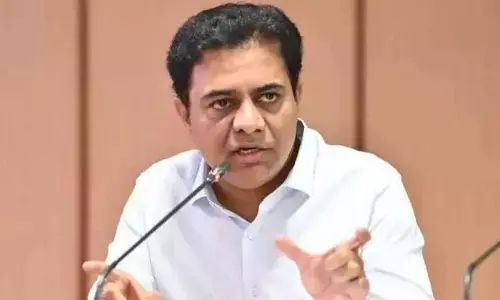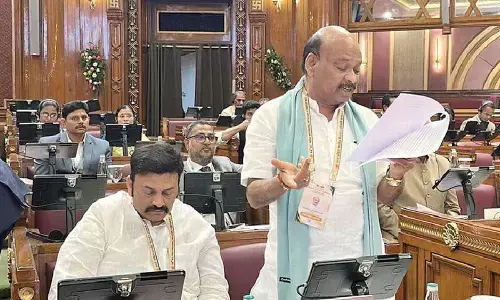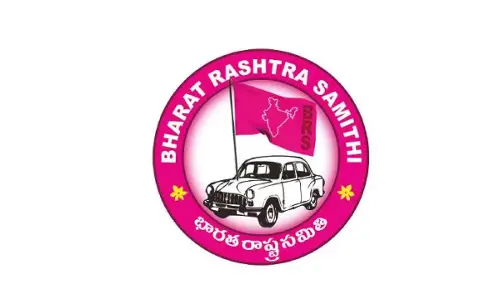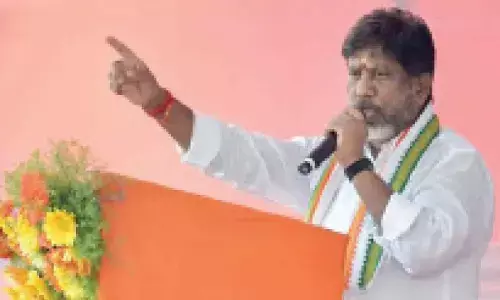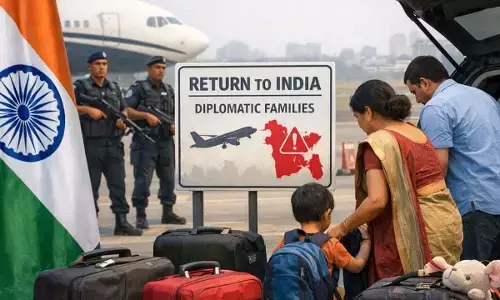Past, present and future
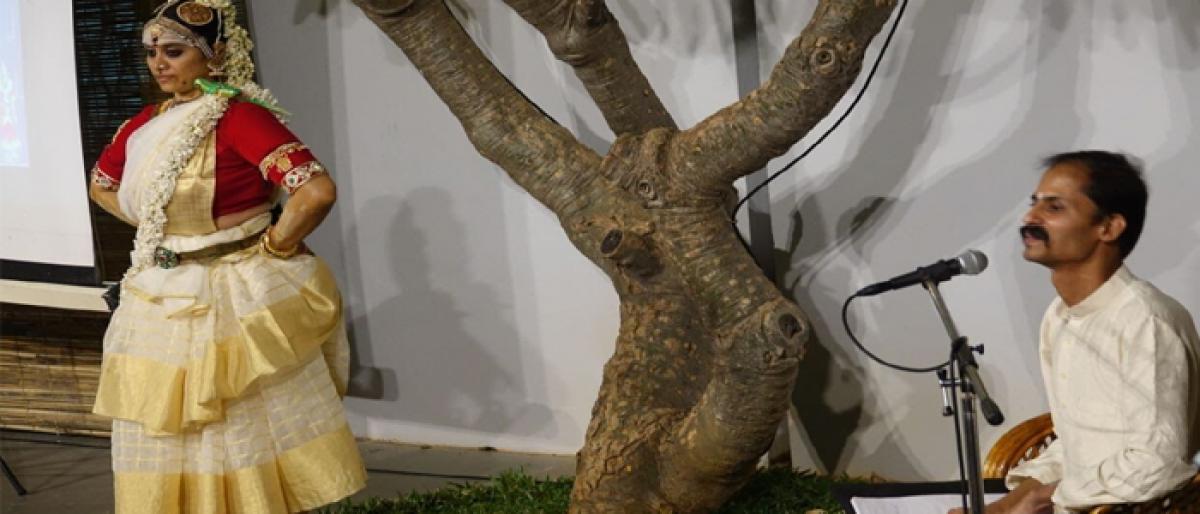
This is an attempt to make sense out of a cultural phase that the historic city of Hyderabad is going through based on the keen observation of the cultural scene of the city for well over a decade
This is an attempt to make sense out of a cultural phase that the historic city of Hyderabad is going through based on the keen observation of the cultural scene of the city for well over a decade.
Land
As a newly minted State, Telangana is trying to forge an association with and reach out to re-establish itself with an identity of its own on all fronts – economic, political and cultural-drawing its strength from its past. As a part of its cultural promotion, various workshops, seminars, conclaves and a host of cultural activities are being organised in various cultural centres of the city.
Recently concluded, Nartanam Conclave, thanks to the tireless efforts of Madhavi Puranam of Nartanam dance journal, had many discussions and debates on dance related issues along with beautiful dance performances.
Ravindra Bharathi, the iconic cultural centre of the twin cities, is where arangetrams (debuts) take place at lightning speed with young dancers dancing to their social media followers and thanking the journalists for gracing the occasion, who faithfully write glowing reviews the next morning!
Their technique is adequate to wonderful, depending on their teachers and they essay lengthy varnams, padams and javalis and they mimic their ‘gurus’ to a T. A joyful evidence that many are imparting and many more are imbibing classical culture! However, scratch beneath the surface- beyond these joyful renderings of padams, glittering jewellery and costumes – one can perceive that there is a certain disconnect and a hollowness that provokes unsettling questions.
Questions that are never asked or addressed in any workshops or conclaves, the proverbial elephant in the room! The questions are related to but not limited to the dancer's understanding of (or rather, lack of) the content, context, body awareness, teaching and research methodology and the adequacy of the training that is being imparted to these youngsters.
People
Let us now take a look at the people that inhabit these cultural spaces. If “it takes a village to raise a child”, it takes a community to raise an artist, for both are similar processes where the concerted effort of various people from the community is essential for healthy and overall development. The interplay and the collaboration of four principal elements - the patrons, the performers, the peer reviewers and the audience - is crucial for the growth of the art and the artist.
We can clearly see pieces of evidence for the existence of such robust cultural ecosystems in the past centuries, tightly associated with the temples, nurturing the artists and art forms. Devadasis donned the role of the performer, while the kings donned that of the patrons and the scholars and experts played the roles of reviewers.
Since the content of the performance was meaningful in the given social context, there was no dearth of the audience! Devadasi, as a performer, had complex intellectual roles to play, one of which was to use the narrative (i.e. stories) to transiently disconnect from the mundane and shift the gaze of the king and the society towards intellectual and spiritual matters. She was a link between the secular and spiritual planes.
Rebuilding of such communities in modern
Context is essential with all four elements; patrons, performers, peer reviewers and the audience, in an interconnected manner. This interlinking is essential for the younger generation to be able to understand the context and dip into the fountainhead of Indic knowledge that we possessed earlier and to understand the texture of the cultural fabric which got tattered during and after the Colonial times.
In any system, a society, institution or an organisation, a few individuals always remain at the core and act as the driving force behind the change - a micro change - perhaps but change all the same. The ability, the intent and the innate need of a few individuals, from any sphere of the society, to connect and to create learning spaces and the ambience for the younger generations and serve as catalysts for change, forms the core of this article.
Two dance scholars from the twin cities; Anupama Kylash and Jayachandran Surendran, share such intent. Their performances and presentations are often work in progress and delineate a dot to dot progression with an enquiry at heart and an intent to share their experiences of dance with younger dancers, fueling the thought process further. Anupama is a faculty at Silicon Andhra University, California and a senior performer, teacher, choreographer with several performances and lecture demonstrations to her credit in India and abroad.
Jayachandran Surendran is a senior dance research scholar at IIIT, Hyderabad with close to a decade of experience in research and documentation in Kalakshetra, a premier dance institution in South India. Pushing the envelope diligently and working within the traditional framework, these two scholars have been exploring the complex and most comprehensive South Indian dance and are trying to identify the common thread running between various art forms.
With the firm belief that the dance research should not be restricted to universities or to conclaves and intimidating scholarly environments and that it should take place in environments where the students feel free to question without the pressure of judgment, both Anupama and Jayachandran are striving to create such learning spaces, the right tools and ambience to empower themselves and the next generation in dance studies.
The ‘Thinking Cap Series’, spearheaded by Anupama Kylash, recently, is an attempt to rekindle the interest in research in matters related to performing arts, with an emphasis on promoting an environment of informed learning. The series kick-started with the showcasing of analytical skills and thought to process of the dance scholar Jayachandran Surendran. His talk on Thiruvarur, a celebrated temple town in Tamil Nadu, as interpreted in the varnam ‘Roopamu Joochi', performed by Vamsi Madhavi, raised the curtain on discussions on Indic thought and wisdom, which is the lifeline for Indian aesthetics, philosophy and art.
His brilliant analysis pointed in the direction of a need for deeper contemplation when deciphering the layered and coded language of Indic wisdom and on how a work can be choreographed to not just present the linear narrative but to develop the narrative further to bridge the gap between the narrative and the metanarrative.
In the most recent event Seekathon, which was organised by a passionate dancer, Pramod Kumar Reddy (Abhinetri Arts Academy) with the enthusiastic support from Mamidi Harikrishna, director of Department of Language and Culture, Telangana State, Anupama elaborated on interpreting of literature through abhinaya, while Jayachandran discussed ‘text reading in dance’ with interesting insights into interpreting Natyashastra.
The gaps and the dancing dilemmas:
Indian dance forms are contextual in nature. They were part of comprehensive knowledge systems which were transferred from one generation to the next, mostly orally, within certain communities, along with a lot of interconnected subsets of knowledge. The inherent problem with this system is that the dancers who are from outside the community remain at a disadvantage with respect to the methodologies required to teach and/or choreograph new work.
Most of them had acquired the products of the teaching in the form of items but in order to build something new, the dancers have to dwell deep into what they learnt and push the boundaries to create something new. This is a daunting task for many, who are otherwise strong dancers, who shy away from choreographing new work and instead stick to repeating the same pieces ad nauseam.
When the voice of the dancer is not expressed through his/her artistry, the movement becomes mere mimicry. Every dancer has to embark on her/his inner journey at a certain point. The role of the tradition and the teacher is to bring the student to a place, a boundary so to speak, where the contemplation begins. But in the majority of the cases, the training is incomplete with respect to many aspects. Senior dancers, who are evolved with respect to their own artistry have a major role in showing the path to young dancers and in probing them to research and to grow.
Now that a grand tour of Hyderabad’s cultural scene is finished, let the “elephant in the room” do the rest of the speaking!
Before we arm-twist government officials and corporates on funding “culture", which we should gladly do, why not take a serious look at what kind of culture we are disseminating? The answers to most of the questions do not lie in the mere lack of funding. It has to do with the lack of intent on the part of the members of the community to push in the right direction.
What is the basis for associating culture with only “classical” dances?
Why are the vibrant folk dances, now mostly relegated to villages and on the verge of extinction, not adopted and incorporated into the cultural matrix to tell our stories- past, present and future?
How is it that languages, which are windows to culture and which are so vital to understanding the context and meaning of any work are so neglected in education?
Who will articulate to the “look at me" generation that dance is a living, breathing medium which can be utilised to tell a story, a contemporary story, without all the bells and whistles?
When do we get to see a young dancer who uses her training, body, mind and “voice” to tell a story that makes sense to everyone in the audience?
If only I have a magic genie to bring that intent in the community to work in collaboration and bring back the meaningful art that this subcontinent enjoyed for centuries!
Sujatha Maringanti - The writer is founder of Art Can Happen Anywhere.








